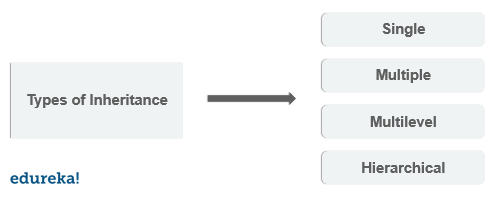Python编程语言易于学习,并且可用于过程式和面向对象的编程方法。继承是面向对象编程中的此类概念之一。代码可重用性是继承的长处,当我们使用Python时,它在许多应用程序中都有帮助。以下是本文讨论的概念:
- 什么是继承?
- 初始化功能
-
继承类型
- 单继承
- 多重继承
- 多级继承
- 层次继承
- 混合继承
- Python super()函数
- Python方法覆写
什么是继承?
将父类的属性继承到子类中的方法称为继承。这是一个面向对象的概念。以下是继承的好处。
-
代码可重用性-我们不必一次又一次地编写相同的代码,我们可以继承子类中需要的属性。
-
它代表了父类和子类之间的现实关系。
-
它本质上是可传递的。如果子类从父类继承属性,则子类的所有其他子类也将继承父类的属性。
以下是python中继承的简单示例。
class Parent():
def first(self):
print('first function')
class Child(Parent):
def second(self):
print('second function')
ob = Child()
ob.first()
ob.second()输出:
first function
second function
在上述程序中,您可以使用子类对象访问父类函数。
子分类
通过在子类的声明中提及父类名称来调用父类的构造函数称为子类。子类通过子类识别其父类。
__init __()函数
每次使用类创建对象时,都会调用__init __()函数。当我们在父类中添加__init __()函数时,子类将不再能够继承父类的__init __()函数。子类的__init __()函数将覆盖父类的__init __()函数。
class Parent:
def __init__(self , fname, fage):
self.firstname = fname
self.age = fage
def view(self):
print(self.firstname , self.age)
class Child(Parent):
def __init__(self , fname , fage):
Parent.__init__(self, fname, fage)
self.lastname = "edureka"
def view(self):
print("course name" , self.firstname ,"first came", self.age , " years ago." , self.lastname, " has courses to master python")
ob = Child("Python" , '28')
ob.view()继承类型
根据所涉及的子类和父类的数量,python中有四种继承类型。

单继承
当子类仅继承一个父类时。
class Parent:
def func1(self):
print("this is function one")
class Child(Parent):
def func2(self):
print(" this is function 2 ")
ob = Child()
ob.func1()
ob.func2()多重继承
子类从多个父类继承时。
class Parent:
def func1(self):
print("this is function 1")
class Parent2:
def func2(self):
print("this is function 2")
class Child(Parent , Parent2):
def func3(self):
print("this is function 3")
ob = Child()
ob.func1()
ob.func2()
ob.func3()多级继承
当一个子类成为另一个子类的父类时。
class Parent:
def func1(self):
print("this is function 1")
class Child(Parent):
def func2(self):
print("this is function 2")
class Child2(Child):
def func3("this is function 3")
ob = Child2()
ob.func1()
ob.func2()
ob.func3()层次继承
层次继承涉及从同一个基类或父类的多重继承。
class Parent:
def func1(self):
print("this is function 1")
class Child(Parent):
def func2(self):
print("this is function 2")
class Child2(Parent):
def func3(self):
print("this is function 3")
ob = Child()
ob1 = Child2()
ob.func1()
ob.func2()混合继承
混合继承涉及在单个程序中发生的多个继承。
class Parent:
def func1(self):
print("this is function one")
class Child(Parent):
def func2(self):
print("this is function 2")
class Child1(Parent):
def func3(self):
print(" this is function 3"):
class Child3(Parent , Child1):
def func4(self):
print(" this is function 4")
ob = Child3()
ob.func1()Python Super()函数
超级功能允许我们从父类中调用方法。
class Parent:
def func1(self):
print("this is function 1")
class Child(Parent):
def func2(self):
Super().func1()
print("this is function 2")
ob = Child()
ob.func2()Python方法覆写
方法覆盖
您可以覆盖python中的方法。看下面的例子。
class Parent:
def func1(self):
print("this is parent function")
class Child(Parent):
def func1(self):
print("this is child function")
ob = Child()
ob.func1()





留言评论
暂无留言